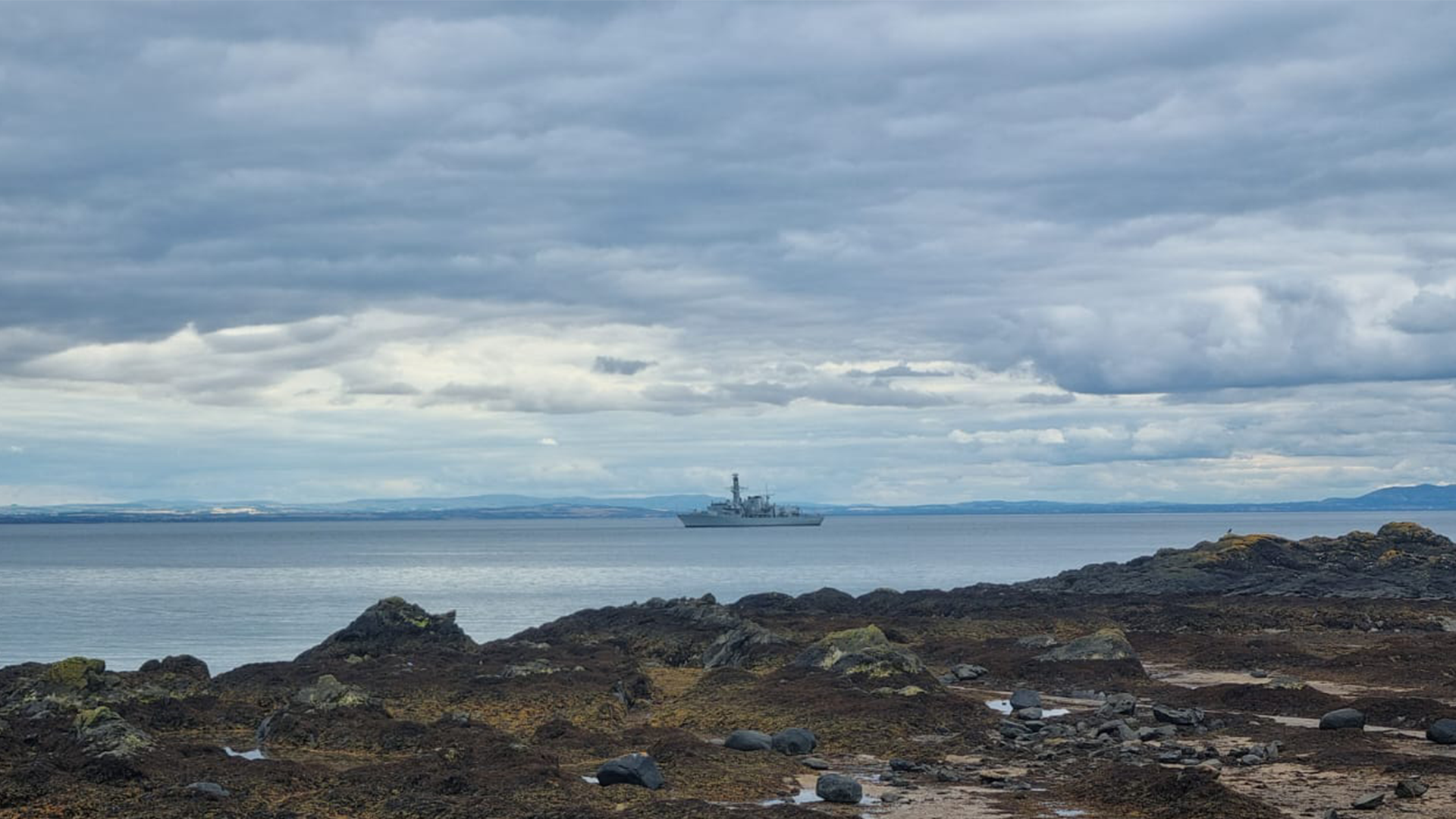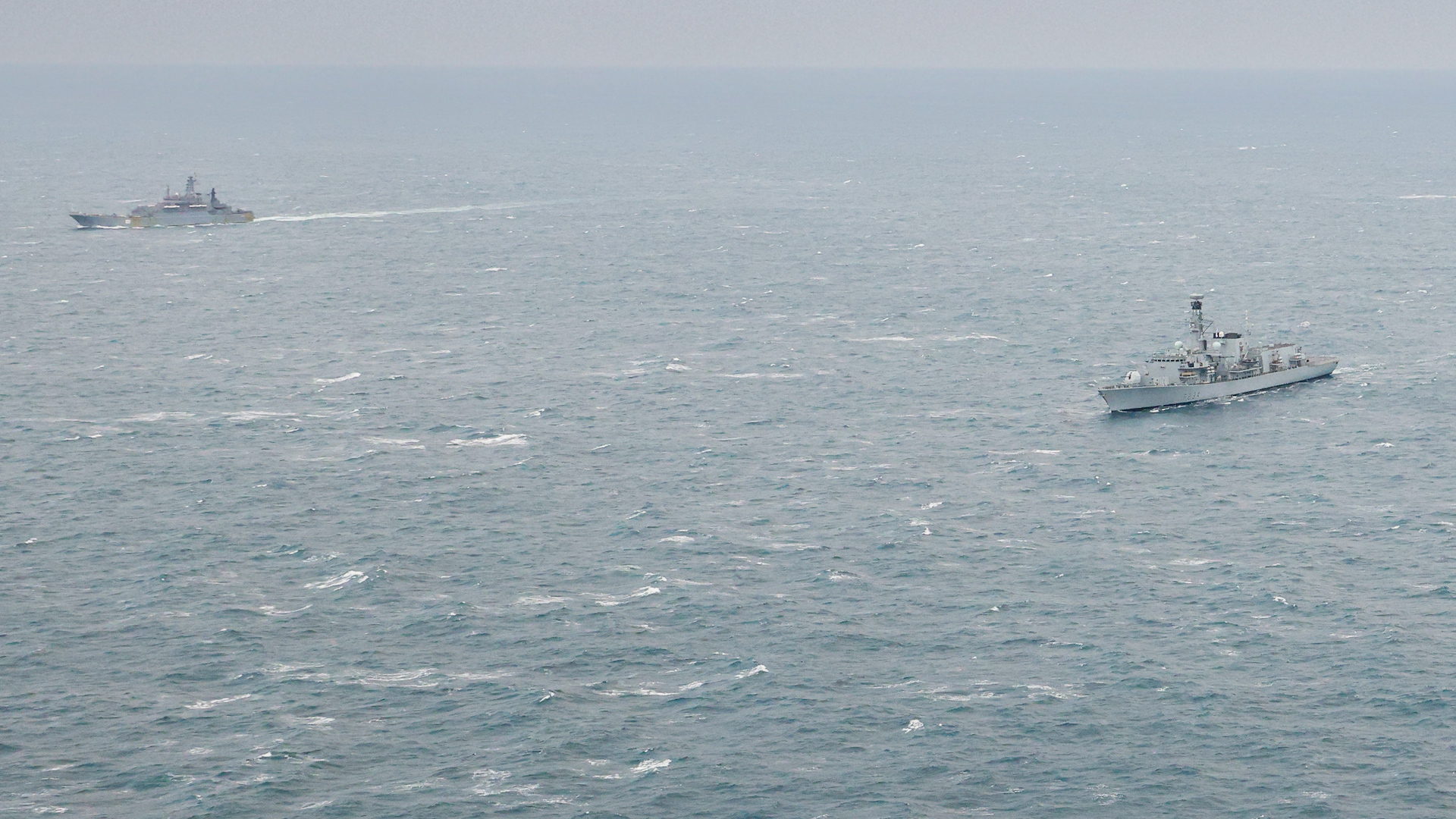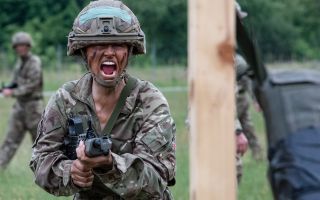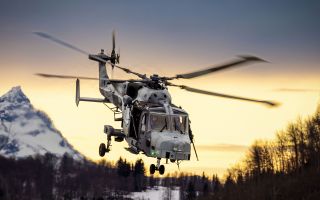
At anchor on a Royal Navy frigate: Hands to Bathe, horse racing and liberty boats

The crew of HMS Iron Duke took a break from operations off the coast of Scotland to take part in a Royal Navy tradition known as Hands to Bathe – a sanctioned swim in open water when conditions and the ship's programme allow.
The pause came during a period of high-tempo activity, with firefighting drills carried out below deck and flight training resuming shortly afterwards.
The sunny weekend brought deck games, liberty boats and a rare chance to unwind but, by Monday morning, sunshine had given way to Storm Floris, with the ship staying at anchor until conditions improved.
- Hands To Bathe: Why this Navy custom is not about washing hands
- Your memories of Hands to Bathe tradition at sea
- Banyans: How Navy crews enjoy BBQs on the beach in centuries-old tradition
"Time to take full advantage of the stunning Scottish sunshine. All departments: stand by for Hands to Bathe," the ship's company wrote in a post on X.
What is Hands to Bathe and why is it called that?
Despite how it sounds, 'Hands to Bathe' isn't about washing hands – it's a long-standing Royal Navy tradition that signals a swim break for the ship's company.
When the order is given, the ship comes to a complete stop, known as Zero PIM (Plan/Points of Intended Movement in nautical navigation), and all machinery, propellers, and sonar equipment are shut down for safety.
A rescue boat is launched, a crew member keeps watch for sharks, and scrambling nets are lowered over the side.
The phrase dates back centuries. Originally, the full order was "All Hands to Bathe" – with hands referring to sailors, as in "deckhands" or "all hands on deck".
Over time, it was shortened to simply Hands to Bathe, but the meaning remained the same: everyone in the crew was invited to swim.
The practice began out of necessity. In the age of sail, fresh water was scarce and mainly reserved for drinking.
There was rarely enough for washing, so stopping the ship in calm, warm seas gave sailors a rare chance to cool off and clean themselves in the ocean.
Although the name has stuck, the custom has evolved into a morale-boosting tradition rather than a hygiene stop.
It's still observed today – even on submarines, although with more safety precautions – and similar swim breaks, such as the US Navy's Swim Call, are common across other navies too.
Firefighting drills before the dip
The swim followed a mid-major fire exercise carried out below deck – a standard training serial that tests the crew's ability to respond to onboard emergencies.
The ship described it as "controlled chaos below deck, seamanship razor-sharp throughout".
With the drill complete, the swim provided a brief but well-earned break.
The pause didn't last long.
Soon after, a Wildcat helicopter from 815 Naval Air Squadron launched from the flight deck to carry out familiarisation drills, helping maintain coordination between the aircrew and ship's company.
It wasn't all drills, deck landings and swimming.
While anchored in the Firth of Forth, the crew made the most of the weekend with a round of classic flight deck games.
Sailors competed in horse racing, a traditional Navy game where the deck turns into a massive board game and teams roll giant dice to move coloured horses across it.
Meanwhile, liberty boats ferried personnel ashore for a break on land.

Busy operational period for HMS Iron Duke
In early July, HMS Iron Duke was among several Royal Navy assets tasked with tracking a group of five Russian warships as they moved through the English Channel and around the UK.
The flotilla included two Steregushchiy-class corvettes, a Smolnyy-class training ship, a tanker and a bulk carrier.
According to the Royal Navy, it was the 17th time in the past 12 months that Iron Duke had been activated to respond to potential threats to the UK and its interests.
Her Commanding Officer, Commander David Armstrong, said: "Protecting the sovereignty of the UK and our Nato allies is at the heart of the Royal Navy's mission, and we take great pride in the operational impact we make in ensuring the security of the UK's maritime domain."
Five-year refit and return to readiness
HMS Iron Duke is a Type 23 Duke-class frigate based in Plymouth.
Launched in 1991 and commissioned in 1993, she returned to the fleet in 2023 following a five-year refit.
She is equipped with Sea Ceptor air-defence missiles, the Artisan 3D radar, and embarks a Wildcat helicopter for airborne surveillance and strike.
While the ship's main role is general-purpose – from escort duties to training – Iron Duke has repeatedly been called on to shadow Russian vessels and respond to short-notice tasking in UK waters.
And sometimes, in between drills and deployments, there's just enough time for a dip!









